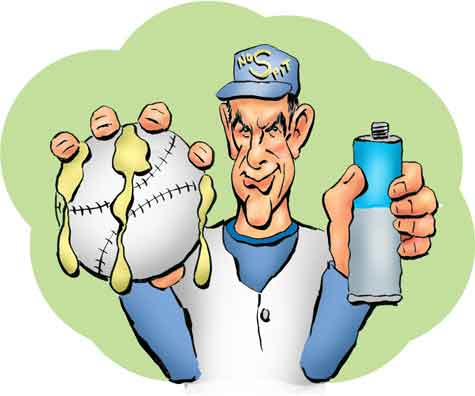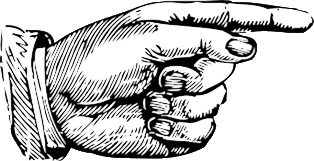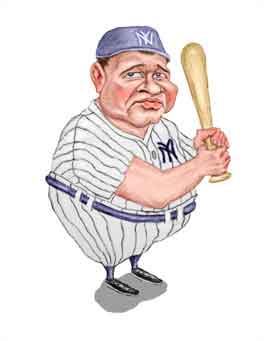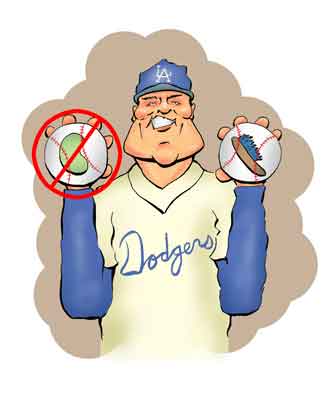Gaylord Perry

The year 1920 was THE year of change for professional baseball.
First, it was the end of the deadball era. That is, it was the year that Babe Ruth - who had hit a then record 29 home runs in 1919 - now hit a whopping 54.
Next and as a response to the 1919 "Black Sox" scandal, baseball fell under the auspices of an independent baseball commissioner. That was the formidable Kenesaw Mountain Landis.
And finally, there was the most unexpected, nay, unfathomable alteration in the history of the game from the time it wasn't invented by Abner Doubleday to the extant year of 1920.
And that was ....?
 |
The spitball was banned. |
Ha? (To quote Shakespeare). Not that! Surely not the banning of the spitball!
Yes, in 1920 ...
 |
The spitball was banned. |
Oh, by the way. Just what is a spitball?

Babe Ruth
Two Records in a Row
There are actually two types of pitches that are dubbed a spitball. One - of the most venerable heritage - is where the pitcher does indeed put a bit of saliva on his fingertips before he grips the ball. As he throws, the added lubrication more or less squirts the ball from his fingers. The ball then moves toward the batter with little spin and so it breaks - ergo, curves in its path - in unexpected ways.
The spitball then behaves like the knuckleball. The knuckleball is held with the tips of the fingers (although some pitchers do indeed grip the ball by the knuckles) so that when it's released the spin is minimal. Again the unpredictable path makes a knuckleball difficult to hit.
The knuckleball is perfectly legal but extremely difficult to master. Although fewer and fewer pitchers have the pitch in their armory, the best cited are of the post World War II generation. The consensus is that the best of all time was Phil Niekro who played for most of his career for the formerly Boston then Milwaukee and ultimately Atlanta Braves.
The other kind of spitter is where the pitcher rubs a bit of vaseline or some other kind of salve on the ball. This adds a bit of extra assymetry to the ball both in weight and shape (in addition to that of the seams). Again the altered aerodynamics results in the ball breaking in an unpredictable manner and (hopefully) throwing the batter off.1
Footnote
That said, there are specialists in fluid dynamics - and air is technically a fluid - that are skeptical of the aerodynamic explanation. Instead they believe the lack of rotation is simply due to the slippery surface.
Because the spitter had been such an integral part of the game - as we said it wasn't banned outright until 1920 - the rules allowed 18 pitchers to continue their spittin', if not their belchin' and cussin'. These were Dick Rudolph, Marvin Goodwin, Ray Caldwell, Dana Fillingim, Bill Doak, Clarence Mitchell, Allan Russell, Yancey "Doc" Ayers, Urban Shocker, Hubert "Dutch" Leonard, Allen Sothoron, Urban "Red" Faber, Phil Douglas, Stan Coveleski, Jack Quinn, Burleigh Grimes, and Ray Fisher2. Burleigh was the last of this illustrious group to retire and so after 1934, the spitball was banned outright.
Footnote
Ray, though, was banned from baseball in 1920 because he accepted a job as baseball coach at the University of Michigan. The league said he had already signed his conract although Ray maintained he had been given the OK to check out the Michigan job. He was later re-instated in Major League Baseball but he never got a chance to throw another legal spitter.
Although spitballers are easily dismissed as knuckleballers who can't pitch, throwing a good spitter is by no means trivial. Perhaps the best spitball pitcher was Elwin Charles "Preacher" Roe whose longest tenture on a team was with Brooklyn from 1948 to 1954 where he racked up an incredible 93-37 Win-Loss record. The year after his retirement he elaborated on what he felt was a lost art for an article in Sports Illustrated.
Footnote
Although Preacher liked to play up his country roots, he was actually well educated, a college graduate who taught math when he wasn't playing baseball.
There are other players at least rumored to have tossed dampened globes and the suspicion is virtually all pitchers at one time or another give it try. The pitchers themselves tend to shrug the matter off. As Hall of Famer Bob Gibson said, "Rules or no rules, pitchers are going to throw spitters." Phil Regan told a reporter, "I can't come right out and tell you that I now throw the spitter," adding "but I'd say this: I don't use it nearly as much as everyone thinks." Even Don Drysdale, by far better known as a beanball tosser, has been listed as a spitballer.

Don Drysdale
Better Known for Other Pitches
But today if you say "spitball" to a baseball fan, they'll immediately think of Gaylord Jackson Perry whose career stretched from 1962 to 1983.
Naturally when he was an active player, Gaylord denied he ever threw the spitball - not even on August 23, 1982, when he was caught "redhanded" (or perhaps we should say "spit-handed").
Actually Gaylord was never caught throwing a spitball. Strictly speaking he was ejected from the game because he was the active pitcher when a scuffed ball was found in play. This episode shows us that all spitballs are not created equal - and there are alternatives.
Perhaps the simplest alternative is to pretend to throw a spitball. Although Gaylord may have tossed the occasional moisture-laden spheroid, what he preferred doing was waging psychological warfare so the batter would think the next ball might be a spitter. Gaylord would stand on the mound and between pitches he would move his hands nervously over his cap, his jersey, and his eyebrows as he if was "loading up" as they say. But one player who frequently faced Gaylord said he never saw him throw anything except good pitches.
But if Gaylord threw - or pretended to - throw a spitter, what's the big deal about the "scuffed" ball?
We mentioned the "modern" spitball has some kind of salve snuck onto the surface of the ball to alter its balance and aerodynamics. But if you scuff the surface you achieve the same effect. So the "emery ball" where you sand the surface with emery paper or scratch the ball with a tack achieves the same effect. Unfortunately a scuffed or scratched ball is easy to detect particularly since the umpires can examine any ball that is in play. A true spitball can be wiped off by the catcher or other friendly teammate.
But we again ask?
 |
Did Gaylord Perry REALLY toss the spitter? |
And if so how much?
Evidently if the baseball bigwigs thought Gaylord was a "wet-hurler", it was forgivably infrequent. After all, he did win two Cy Young Awards in 1972 and 1978, one award while playing in each league. And he landed in the Baseball Hall of Fame in 1992.
Footnote
The Hall of Fame is a nice place to visit and the town of Cooperstown refreshingly cozy. The downtown area is easily walkable and there's other attractions in the area - including an old-time outdoor village where, among other things, you can see the famous "Cardiff Giant".
Of course with Gaylord's reputation, an umpire would be asked by the other team to check to see if Gaylord was concealing anything nefarious about his person. In later years, he said he'd keep the stuff on his fly since he figured no one would ever check there. However, this is probably Gaylord giving everyone a gentle tug of the leg. After all, an umpire might not check there, but if Gaylord was standing on the pitcher's mound and thus "loading up" in front of 50,000 fans by reaching for his ...
Well, let's just say the required gesture would have been rather obvious.
References
Me and the Spitter : An Autobiographical Confession, Gaylord Perry, Saturday Review Press, 1974.
"Spitball", Baseball Reference, 2000-2019.
"30th Anniversary: Gaylord Perry Finally Busted", Chris Jaffe, The Hardball Times, August 23, 2012.
"Spittin' Image: If Gaylord Perry Was All Wet, Why the Cy Youngs?", Bob Wolf, The Los Angeles Times, August 2, 1989.
"Gaylord Perry", Baseball Hall of Fame.
"Preacher Roe", Warren Corbett, Society for Baseball Research.
"The Outlawed Spitball Was My Money Pitch," Dick Young, Sports Illustrated, July 4, 1955.
"A Gripping Saga: 11 Tales of Pitchers Using Spitters, Sandpaper and Scuffing", Jay Jaffe, Sports Illustrated, May 3, 2013.
"The Spitball Pitchers", Baseball Almanac.
"The Infamous Spitter", Herman Weiskopf, Sports Illustrated, July 30, 1967.